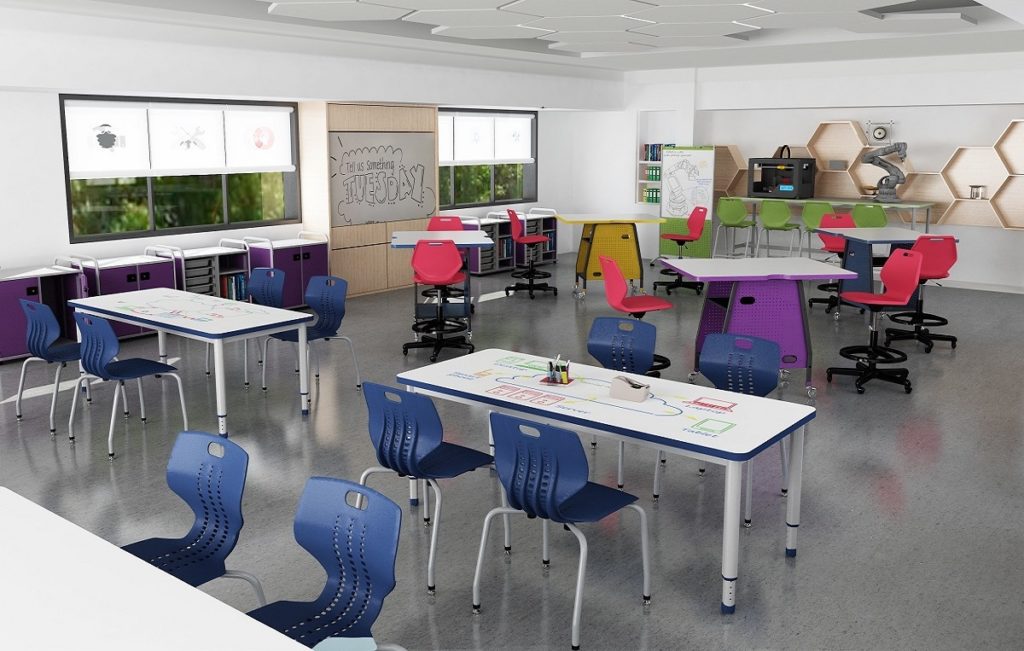There is a documented connection between physical activity and cognitive function. Two studies published by Psychology Today in 2014 found that physical activity can improve cognitive function over the course of people’s lives. One study from the University of Minnesota determined that young people who run or participate in aerobic activities maintain high level thinking and memory skills into middle age, and a second study from Finland found middle aged people who are active protect themselves from dementia as they grow older.
This research demonstrates a positive relationship between physical activity and cognitive function, something that is especially important in kids. This connection is tied to hormonal balance, the release of cortisol levels, dopamine, serotonin and the rest of the feel-good and alertness hormones that are important to survival and learning.
The brain/body connection is very well established, and physiological research also shows that thoughts and ideas can be triggered or suppressed based on too little or too much physical activity. What is both interesting and odd is that there seems to be so little recognition of the brain/body connection in the methods of how we teach kids.
They traditionally have been told to sit, be still, and learn in a passive, one-directional way, although that is changing. Today there is more collaboration and active learning modalities implemented in schools than ever before, even though the basic model is still the “sit-and-get” modality.
DEVELOPMENTAL AND PHYSICAL MECHANISMS
In cognitive assessments, educators are looking at factors such as intelligence, and perceptual skills in areas like verbal tests, math tests, and memory. These are categorized as learning or development mechanisms. A second category is physiological mechanisms. An interesting and important-to-note takeaway is that physical mechanisms serve to get more blood, and obviously more oxygen, to the brain. More blood and oxygen to the braincauses structural changes to neurotransmission and the central nervous system around triggers like intellectual arousal, for example.
Physical activity impacts learning and developmental mechanisms through these changes in neurotransmission and through concepts like social-emotional learning which primes kids to be better learners because of feelings of security and safety. Bringing physical activity into the learning environment helps create social-emotional learning and helps kids become mentally prepared to a master a skill or memorize something.
These two systems work together. The interplay between the physical activity and the emotional response to that movement, when there’s the optimal amount of physical activity – not too much, not too little – there’s a cascade of positive effects that increases cognition rates and primes kids to become better learners.
In the 1930s, Swiss psychologist Jean Piaget unveiled his theory of cognitive development for kids that outlined how kids experience discrepancies between what they know and what they discover on their own. Children are well-adapted at constructing their understanding of the world based on what they experience to develop a mental model of the world. That model is constantly changing as kids process more. Piaget’s theory explained that kids can’t really make that mental model without being physically involved in the learning environment. One painful example would be falling off a bike and skinning a knee. That is an important learning experience for a child, and a huge part of teaching the risks associated with riding a bicycle. Piaget argued that kids can’t be coddled or held with velvet gloves, but rather they have to be allowed to out, be physically active, and embrace the world.
IMPACTING THE LEARNING ENVIRONMENT
What does this mean in the learning environment? The typical design is very computational, very sensible. It’s all squares and rectangles from doors and windows to classroom layout because it’s easy to design from an engineering perspective. Of course, the world isn’t computational at all. It’s very fractal. No two trees look exactly alike. Leaves are all different. The natural world is the exact opposite of the learning environment of the typical school.
One obvious solution is getting outside and being exposed to the sun, trees, and grass. Some schools are taking this idea to heart and creating outdoor classrooms and learning environments. Of course, this is not always possible or even preferable.
One way to make learning more physical is through classes like art, sciences, and makerspaces where the outcome isn’t a written answer, but instead a physical representation of the answer requiring a hands-on response.
School furnishings can also have a physical impact on the school day. For example, a sit-stand desk that lets learners choose between the ability to stand for part of the day or sit at the desk like they would in a typical classroom. Chairs without backs means kids have to engage their core, stomach muscles, and thoracic spine creating an automatic brain/body connection to the simple act of sitting.
Another is a fairly traditional looking chair with a very flexible back. This allows kids to fidget. These micromovements are a form of physical activity. Learners can sit in their chairs and bounce and exert some physical engagement which will prime cognitive performance.
Naturally, physical education and sports are important aspects of getting kids physically active at school, but there is plenty of opportunity for physical activity in the standard, day-to-day classroom. When kids have the ability to move, work with their hands and be collaborative, they become more willing to engage in content and their cognitive ability improves.
